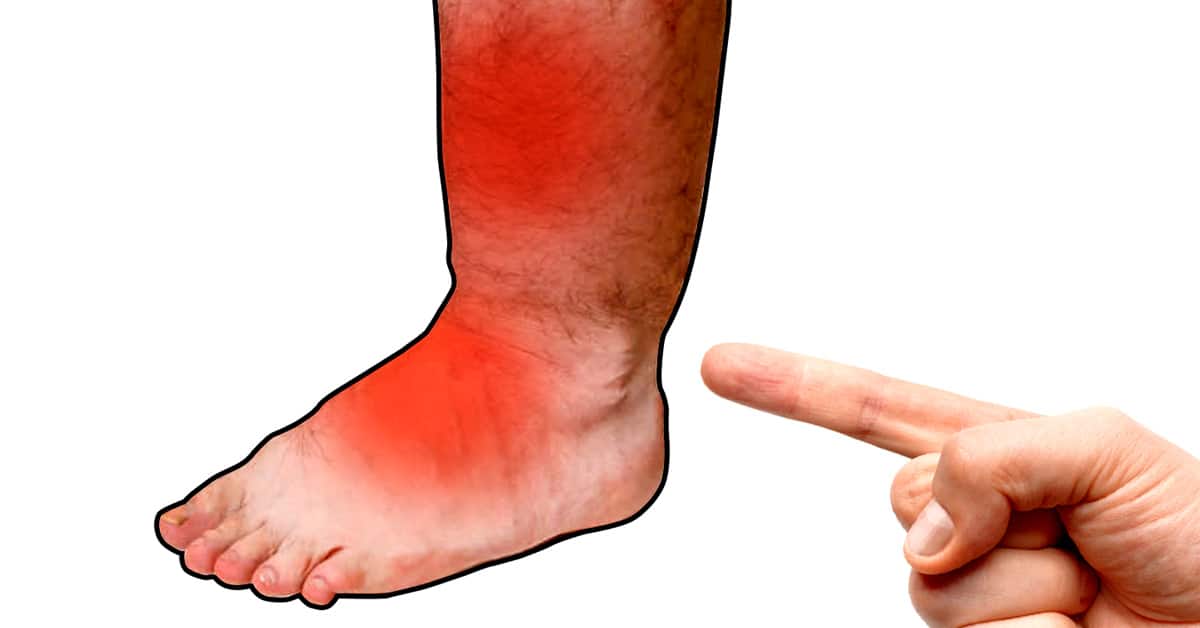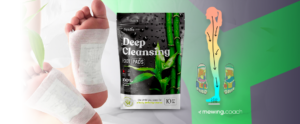Swollen feet and ankles can be highly discomforting, but did you know they can also be a sign of dehydration? According to a Body Water Percentage study, up to 60% of the human body is made up of water, so it’s no surprise that even mild dehydration can lead to swelling.

Dehydration can disrupt the delicate balance of fluids in your body, causing them to leak into your tissues and leading to edema, especially in your feet and ankles. If you’re experiencing this, don’t worry, simple steps can help manage dehydration and reduce swelling.
Keep reading to discover 7 effective strategies to get your feet feeling light and fabulous again!
Recognizing Dehydration Symptoms and Causes in Legs
Dehydration can show up in different ways, like dry mouth, fatigue, dizziness, dark urine, and decreased urine output. Swelling in the feet and ankles, known as edema, can also be a sign of dehydration. When your body lacks enough fluids, it holds onto sodium to stay balanced, causing fluid to build up in your extremities.
This swelling happens because your body’s trying to hold onto water. Keeping an eye out for swollen feet and ankles, along with other signs of dehydration, is important for catching it early. Drinking water and electrolytes can help ease the swelling and get your fluid levels back on track.
Manage Dehydration In Swollen Feet And Ankles in 7 Steps
With some easy steps to beat dehydration, you can avoid swelling in your feet and ankles. These simple tricks will bring relief to your legs, so you can keep moving with ease.
1. Try Foot Detox Patches

Foot detox patches are an incredibly helpful solution for managing edema, without any side effects. These innovative patches offer a supplementary approach to reducing swelling and promoting detoxification in your feet and legs. Learn the science behind these adhesive patches in our blog “Are detox foot pads legit?”
Attach these adhesive pads to the soles of your feet, where their natural ingredients like bamboo vinegar, ginger, and tourmaline work to promote detoxification. As your body detoxes and inflammation decreases, you’ll notice the legs swelling gradually subsiding, leaving you feeling more comfortable and relieved.
By applying gentle pressure and natural ingredients, foot detox patches can help draw out toxins and excess fluids, which eventually relieve discomfort and restore balance. Explore the Nuubu foot detox pads effectiveness and benefits in our in-depth review.

2. Establish a Daily Water Intake Goal
Set a daily water consumption target according to your specific needs and factors such as age, weight, activity level, climate, and overall health. For example, someone who is more physically active or lives in a hot climate may require more water to replace fluids lost through sweat. Similarly, individuals with certain health conditions or those who are undergoing treatment with certain medications may have specific hydration needs.
Consistent hydration plays a crucial role in reducing edema, especially during the summer months. Aim to meet or surpass the recommended daily intake to keep your body adequately hydrated and prevent swollen ankles and feet.
Explore additional tips to prevent swollen ankles during summer apart from maintaining optimal hydration levels for overall well-being.
3. Include Hydrating Foods in Your Diet
Boost your hydration by adding foods rich in water content, like cucumbers, lettuce, tomatoes, celery, and watermelon to your meals. Incorporating water-rich foods to your diet helps meet the daily hydration needs, keeping edema at bay. These foods not only help keep you hydrated but also provide essential nutrients for overall health.
Aim for a balanced diet that includes a variety of hydrating fruits and vegetables. These foods not only contribute to your daily fluid intake but also offer essential vitamins, minerals, and antioxidants crucial for overall health.
Additionally, including other nutritious foods like lean proteins, whole grains, and healthy fats ensures that your body receives the necessary nutrients for energy, muscle repair, and immune function, ultimately promoting optimal health apart from edema prevention.
4. Adopt Hydration Strategies
Make hydration effortless by carrying a reusable water bottle for convenient sipping wherever you go. Having your water bottle within reach makes it convenient to take frequent sips.
Don’t rely solely on thirst cues. Set reminders to drink water regularly throughout the day, ensuring consistent hydration. Spice up your hydration routine by experimenting with infused water options, incorporating fresh fruits or herbs for a burst of flavor without added sugars or calories. These simple strategies promote hydration and support overall well-being.
5. Consider Environmental Factors
Stay flexible with your hydration habits, adjusting them to fit the weather and surroundings. You’ll likely need more fluids to stay hydrated in hot or dry climates, so keep that water bottle handy. And don’t forget to replenish your fluids during workouts or outdoor activities, especially when you’re sweating a lot.
By staying aware of your environment, you can keep yourself hydrated and support your body’s needs in various situations apart from avoiding edema.
6 Monitor Urine Color for Hydration Assessment
Keep an eye on your urine color as a quick way to check your hydration level. Aim for a pale yellow color, which indicates optimal hydration. Darker urine may suggest dehydration, while clear urine could mean overhydration.
Dehydration is also a common reason for swollen ankles in the elderly. Staying adequately hydrated helps prevent discomfort and promotes overall well-being in seniors who are more likely to develop ankle swelling.
7. Avoid Overhydration
Staying hydrated is crucial for managing dehydration and reducing swelling in feet and legs, but moderation is the key. You might keep active and drink plenty of water thinking this is better way to detox your body quickly, but excessive water intake can also be harmful.

While rare, water intoxication can occur when the electrolyte balance in your body is disrupted by drinking too much water too quickly. This can lead to serious health consequences.
Therefore, it’s essential to listen to your body and drink fluids in moderation to avoid edema. Aim for a balanced approach throughout the day, and consult a healthcare professional if you have any concerns about your hydration levels or experience unusual symptoms that may require treatment.
Final Thoughts
Hydration is your ally in managing and preventing swollen feet and ankles. It’s important to know about the causes and symptoms of edema, and ensure your body isn’t dehydrated. Keep your fluid levels in check by setting hydration goals, increasing the intake of hydrating foods, and paying attention to your urine color. But don’t forget to avoid overdoing it; balance is key to preventing swollen legs.
By staying hydrated, you’re not just easing swelling in your ankles, you’re also supporting your body’s overall health and vitality.



